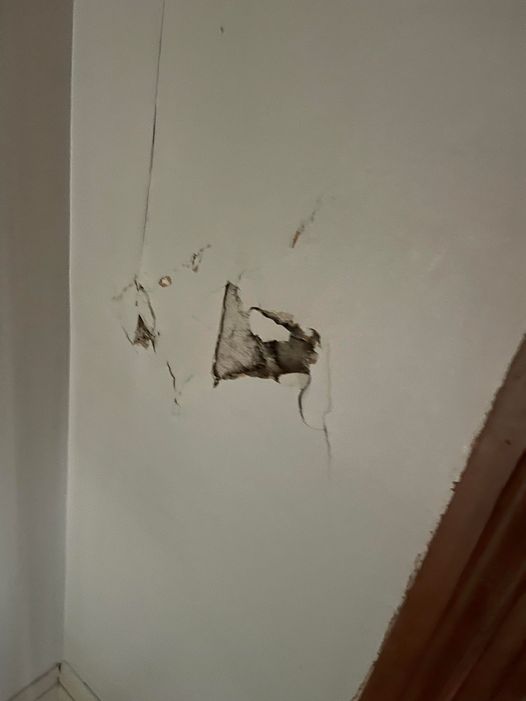Is drywalling over the cracked and hole-filled lath plaster walls in the stairway the only cost-effective option for a first-time homeowner, or are there other budget-friendly solutions available?
1 year ago
Last Updated: May 15, 2024
So, my daughter finally purchased her first home about a year back. It’s an older house from around 1900, but in pretty good condition for the most part. There’s just this one issue with the lath & plaster walls in the stairway – they have some pretty big cracks and a couple of holes. We’ve managed to patch up smaller areas on different walls, but these cracks are just too big to fix up. It looks like we might have to do a full ‘patch job’ on the entire stairwell (which consists of 7 steps up, a landing, and then another turn for 7 more steps up). Do you think drywalling over is the only option we have? Any budget-friendly suggestions for a young, new homeowner like my daughter? We’re open to any and all ideas!

I kept this video for my dad in case it comes in handy. I’m a big fan of this guy.
https://www..com/reel/1462033794641445/
Had a fantastic suggestion for drywall, but our challenge is with lathe & plaster. I’ll keep it in mind for future projects though! Thanks for the tip.
Russell, in one of our homes, we had plaster with small holes, so we used sheetrock mud to fill them in.
Oh I see what you mean – that’s a smart suggestion!
Using a specific type of paneling is a cost-effective and easy option, or the best option might be to remove and use Sheetrock.
Fixing those areas would be much cheaper and quicker than covering them with drywall or removing the plaster.
Release the pent-up anger energy from that space….
Remove the plaster and lath and put in sheetrock.
Get rid of any loose pieces and mud it well, it should be okay. It might not look as smooth and nice as new drywall, but if that bothers them, a more affordable alternative to completely replacing it with new drywall would be to use construction adhesive to attach some inexpensive bead board panels, which can look quite nice and also provide sturdier walls in stairwells to prevent future damage. Some example images from Google below.
No content
No content
Try using hot mud, it’s more cost-effective for patching than re-drywalling. Plus, hot mud dries a bit stronger than the pre-mixed stuff. 👍🏼
I’d remove the plaster from that wall and replace it with drywall. It wouldn’t cost much to do just that one wall…if you do it yourself.
Remove any loose pieces and apply drywall fillers as needed. Then, use setting type joint compound, also known as ‘hot mud’. Trying to remove plaster can be a nightmare and waste of time. Additionally, drywalling over plaster is not recommended and can lead to other issues.
What type of problems are you facing?
Stresses the importance of properly installing door jams, baseboards, stairwell skirting, window, and door casings to ensure they look seamless. If drywall is being hung, it is crucial to remove the existing trim to avoid a shoddy finish.
When it comes to inside corner taping at the wall and ceiling junctions or where walls meet, whether it’s an inside or outside corner, the process can become ten times more labor-intensive and costly compared to simply skim coating some patches.
Explains how to apply hot mud in two simple steps. Start by lightly spraying water on the lath and plaster edges. Then, mix the mud with a mixture of white glue and water. Check out various tutorials online for guidance. Press the mud firmly onto the plaster edges, leaving the lath about 1/4″ away from the finished wall. Apply hot mud once more, sand it flat, use mesh tape without overlapping, and finish off with a few coats of drywall compound using an 8-10″ drywall knife. Feather the edges, let it dry, sand it smooth, prime, and paint.
Redid the Architraves in my room, and it all turned out well in the end.
In our case, we extended the replacement back to the nearest stud in the bedroom by using plaster board and smoothing out the seam. However, the stairs were in too bad of shape, so our builder removed the old material and replaced it all with plaster board.
Absolutely, just go ahead and Sheetrock over it with 3/4” and you should be good to go without any issues.
You can purchase 4×8 drywall sheets for just $20 each. ‘t forget to get a bucket of mud and some tape.
My recommendation would be to cover it with paneling temporarily until it can be removed and properly drywalled.
Apply Durabond over crumpled newspaper, making sure not to go completely flush with the wall. It might need two coats. Finish with standard sheet rock mud. If needed, create a patch from 1/2 inch sheet rock to build up the surface.
Repair cracks using screen tape and spackling. Use small pieces of drywall and appropriate backing to fix holes, then apply tape and spackling. You don’t have to completely cover it with drywall. You can also purchase small drywall pieces to avoid having to work with a full sheet.